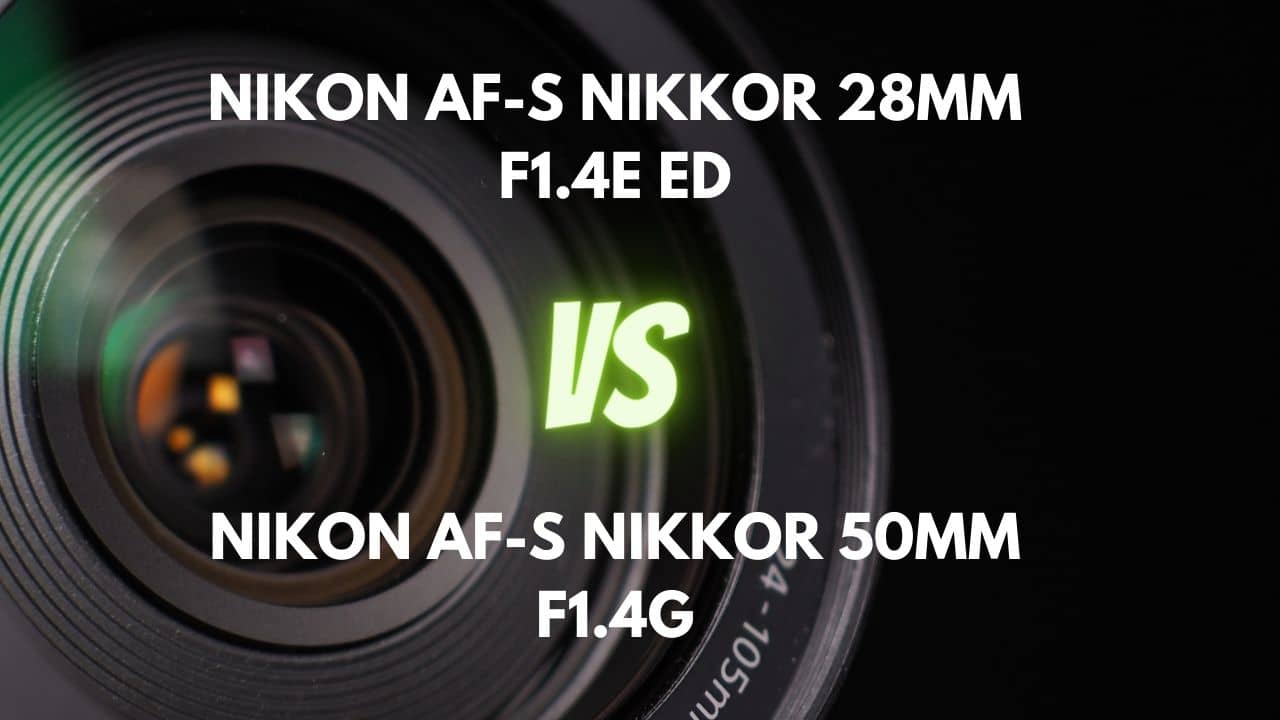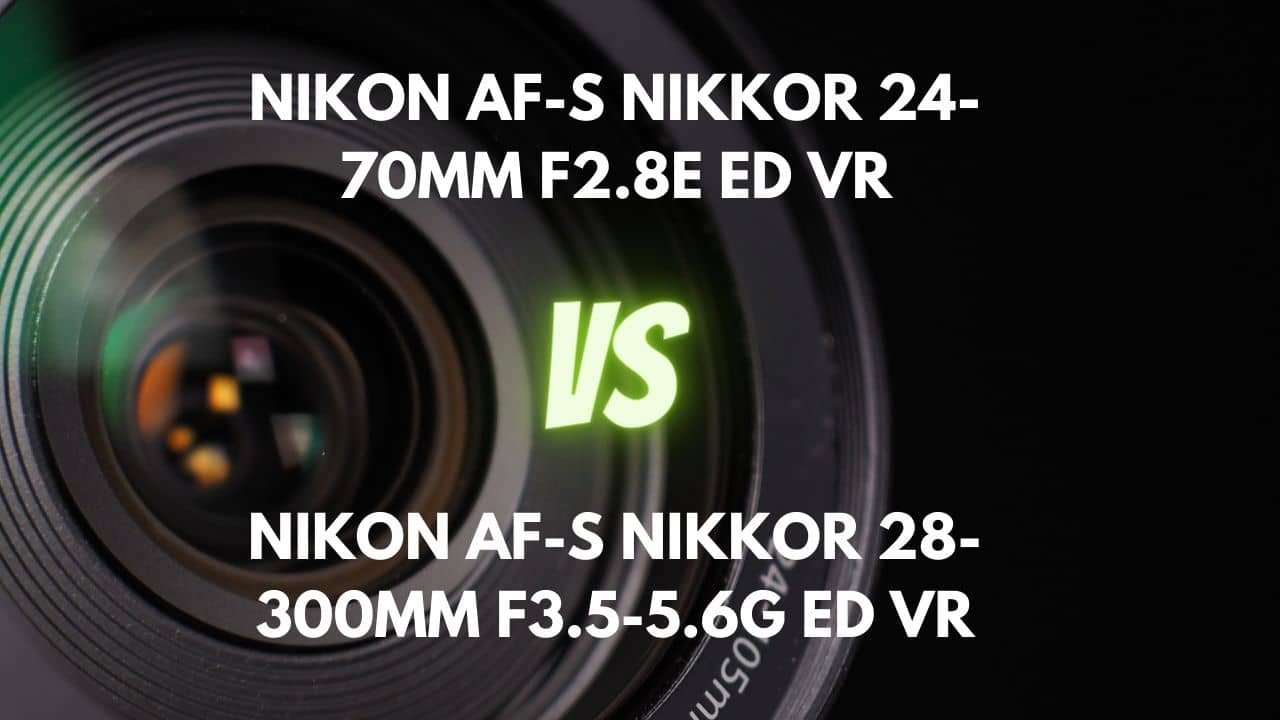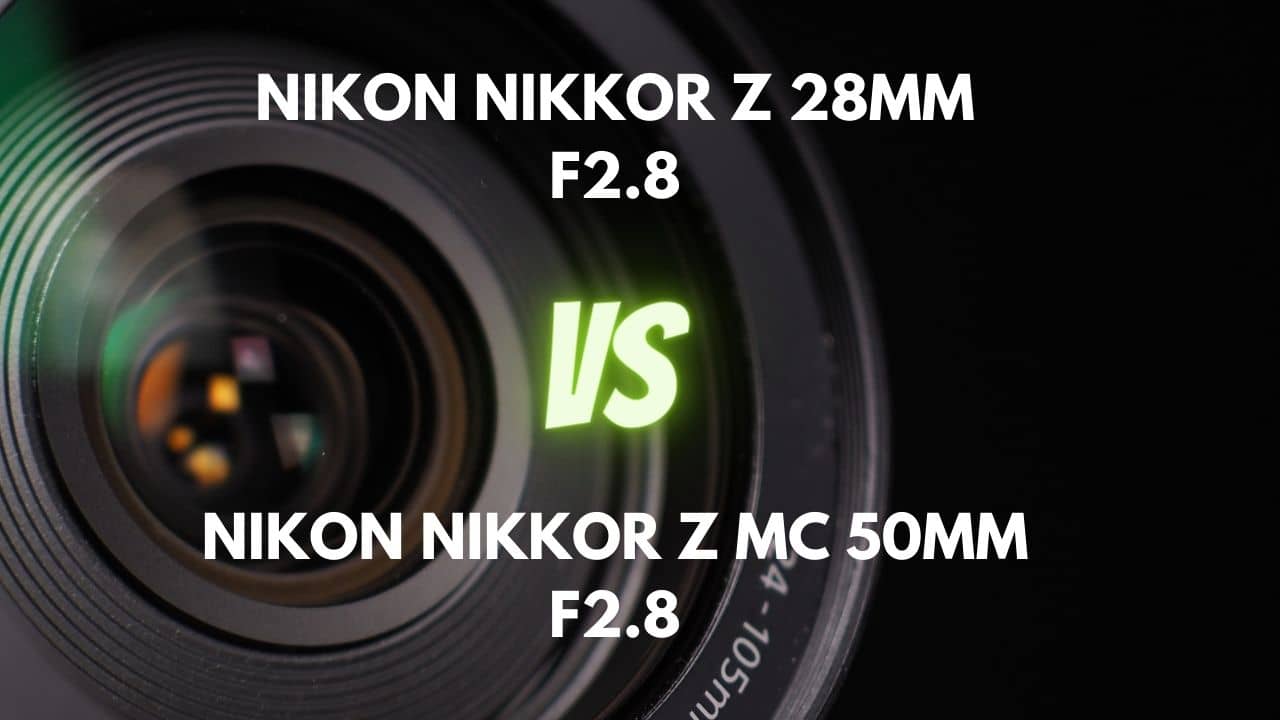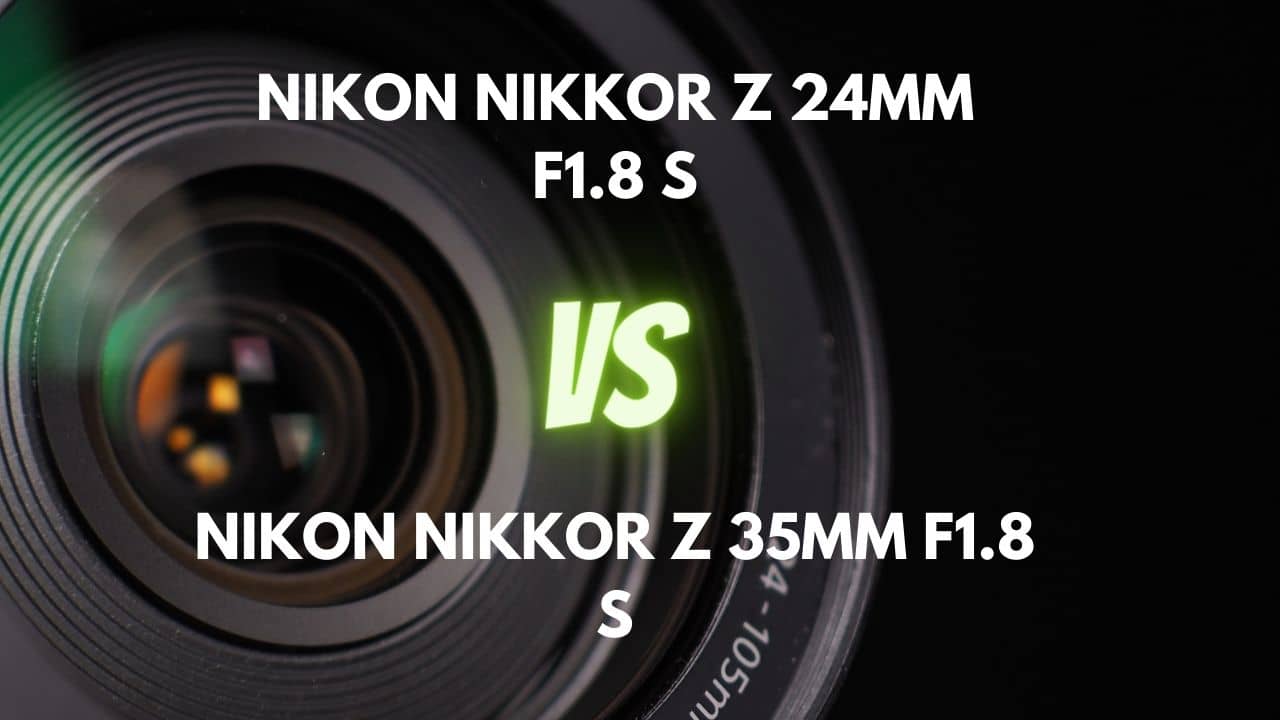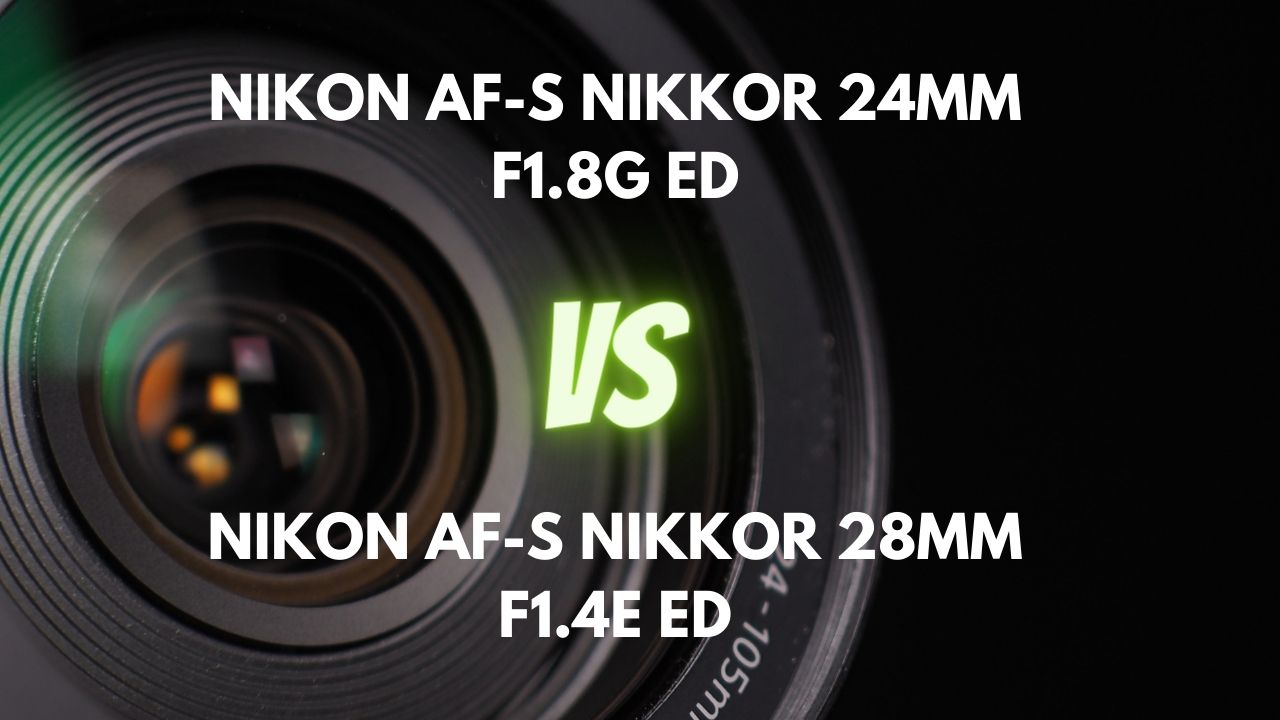Are you looking to expand your photography toolkit with a versatile lens, but can’t decide between the Nikon DX 18-300mm f/3.5-6.3 and the Nikon DX 70-300mm f/4.5-6.3? You’ve come to the right place!
In this comprehensive comparison, we dive into the world of these two lenses, exploring their strengths and weaknesses across a range of photography genres. Whether you’re an avid landscape photographer, a portrait enthusiast, or a wildlife adventurer, we understand the importance of finding the perfect lens to suit your needs.
We’ll guide you through the key aspects of each lens, such as focal range, aperture, dimensions, weight, weather sealing, focusing performance, image stabilization, sharpness, bokeh quality, flare and ghosting control, vignetting, and distortion control.
By the end of this article, you’ll have a clear understanding of the advantages and disadvantages of each lens, empowering you to make an informed decision that aligns with your creative vision and photography goals.
So, buckle up and join us on this exciting journey as we help you unlock the potential of these two Nikon lenses and elevate your photography to new heights!
Overview
| Nikon AF-S DX NIKKOR 18-300mm F3.5-6.3G ED VR | Nikon AF-P DX NIKKOR 70-300mm F4.5-6.3G ED VR | |
|---|---|---|
| Max Aperture | F3.5-6.3 | F4.5-6.3 |
| Aperture Type | Variable | Variable |
| Focal Range (mm) | 18-300 | 70-300 |
| Max Format | APS-C / DX | APS-C / DX |
| Zoom Ratio (X) | 16.7 | 4.3 |
The Nikon DX 18-300mm f/3.5-6.3 has a maximum aperture of f/3.5-6.3, which means it can perform better in low light conditions at the wider end compared to the 70-300mm lens with a maximum aperture of f/4.5-6.3. However, both lenses have variable apertures, meaning that their maximum apertures change as you zoom in or out, which can affect their low light performance and depth of field control.
The Nikon DX 70-300mm f/4.5-6.3 has a significantly larger focal range of 18-300mm, which makes it more versatile for various photography situations, from wide-angle to telephoto. This lens has a zoom ratio of 16.7x, which is considerably higher than the 70-300mm lens with a zoom ratio of 4.3x. Both lenses are designed for APS-C / DX format cameras.
In terms of aperture and focal range, the 18-300mm lens is better suited for low light situations and offers greater flexibility, making it suitable for various photography genres and situations. On the other hand, the 70-300mm lens is more focused on telephoto photography, which can be useful for isolating subjects and creating a pleasing background blur.
Overall, if versatility and low light performance at wider focal lengths are essential factors for you, the 18-300mm lens is the superior choice. However, if you are more focused on telephoto photography and don’t require the wide-angle capabilities, the 70-300mm lens may be a better fit.
Design and Ease of Use
| Nikon AF-S DX NIKKOR 18-300mm F3.5-6.3G ED VR | Nikon AF-P DX NIKKOR 70-300mm F4.5-6.3G ED VR | |
|---|---|---|
| Diameter x Length (mm) | ⌀78.5×99mm | ⌀72×125mm |
| Weight (gr) | 550 | 415 |
| Filter Thread (mm) | 67 | 58 |
| Weather Sealing | No | No |
| Zoom Method | Rotary (extending) | Rotary (extending) |
| Distance Scale | No | No |
| DoF Scale | No | No |
| Hood Supplied | No | No |
| Hood Code | HB-39 | HB-77 |
The Nikon DX 18-300mm f/3.5-6.3 has a diameter of 78.5mm and a length of 99mm, making it shorter but wider than the Nikon DX 70-300mm f/4.5-6.3, which has a diameter of 72mm and a length of 125mm. In terms of weight, the 18-300mm lens is heavier at 550 grams, while the 70-300mm lens weighs 415 grams. Both lenses use a rotary (extending) zoom method, which means their physical size changes when you zoom in or out.
Considering dimensions and weight, the 70-300mm lens is more portable and easier to carry around due to its lighter weight. However, the longer length might make it more noticeable and potentially more difficult to handle. The 18-300mm lens is shorter, which could help with discreetness in certain situations, but its larger diameter and heavier weight might impact the overall balance and handling of the camera setup.
In terms of zoom method, both lenses use an extending rotary zoom, which is generally simpler in design and can result in lower prices and increased durability. However, this design can make it more difficult to achieve effective weather sealing and may affect the camera’s balance while zooming.
Lens Mount and Barrel
With its durable metal lens mount and rubber gasket encasing it, the Nikon DX 18-300mm f/3.5-6.3 offers reliable defense against the intrusion of dust and moisture into the camera body. The lens barrel is mainly constructed of plastic with metal components.
Equipped with a handy zoom lock switch at 18mm, the lens prevents any unintentional extension due to the lens’s weight. Despite being plastic, the lens remains stable and does not wobble when fully extended. However, it extends significantly at longer focal lengths, making it more susceptible to dust and moisture.
In contrast, the Nikon DX 70-300mm f/4.5-6.3 has a plastic lens mount, which lacks a rubber gasket. Despite this, the mount fits precisely and securely onto the camera without any play. The lens barrel is made of polycarbonate and finished in black with gold accents. When set to the 300mm position, the lens extends an additional 3 inches or so.
Comparing the lens mounts, the 18-300mm lens has a more robust and durable metal mount, offering better protection against dust and moisture. On the other hand, the 70-300mm lens has a plastic mount, which may be less durable but is more budget-friendly. As for the lens barrels, the 18-300mm lens features a combination of plastic and metal components, while the 70-300mm lens is made of polycarbonate.
Considering these factors, the 18-300mm lens boasts a superior lens mount and barrel due to its metal mount and rubber gasket, offering increased durability and protection from the elements. However, the choice ultimately depends on your specific needs and preferences as a photographer. If you prioritize durability and protection, the 18-300mm lens may be the better option. If affordability and a lightweight design are more important to you, the 70-300mm lens could be more suitable.
Weather Sealing
The Nikon DX 18-300mm f/3.5-6.3 features a rubber gasket around its metal lens mount, which helps prevent dust and moisture from entering the camera body. However, this lens is not claimed to be weatherproof, as there are no internal seals at the rings and switches, nor is there a fluorine coating on the front element.
In contrast, the Nikon DX 70-300mm f/4.5-6.3 lacks any weather sealing or gasket at the lens mount. Furthermore, there are no internal seals at the rings, switches, or front of the barrel, and it also does not have a fluorine coating on the front element.
Comparing the weather sealing of these two lenses, the 18-300mm lens provides better protection against dust and moisture ingress due to its rubber gasket surrounding the metal lens mount. On the other hand, the 70-300mm lens has no weather sealing, making it more vulnerable to damage or wear over time, especially when used in challenging environments or unpredictable weather conditions.
In conclusion, the 18-300mm lens offers superior weather sealing compared to the 70-300mm lens, making it a better choice for photographers who frequently shoot outdoors or in unpredictable conditions. However, if you primarily shoot indoors or in controlled settings, weather sealing may not be a top priority for you. Ultimately, your decision will depend on your specific needs and shooting environment, as well as the importance you place on protecting your lens investment and having peace of mind while capturing the perfect shot.
Rings
The Nikon DX 18-300mm f/3.5-6.3 features two rings: a zoom ring at the front and a focus ring closer to the camera body. The zoom ring is rubber-coated, ensuring a good grip and smooth action, with just enough resistance to prevent zoom creep. It also has a lock switch to keep the lens at its shortest 18mm setting.
The focus ring is made of rubbery plastic and offers a smooth, well-damped action for fine adjustments. However, there’s no windowed distance scale or depth-of-field indicator. Compared to its peers, this lens has a longer manual focusing distance thanks to its geared focusing system, enabling precise manual override of autofocus. The zoom ring covers a significant distance of over half a turn from 18mm to 300mm, facilitating swift zooming to capture subjects with ease.
In contrast, the Nikon DX 70-300mm f/4.5-6.3 has two rings: a thin focus ring at the front of the outer barrel and a large zoom ring that dominates the lens. The zoom ring is marked at 70mm, 100mm, 135mm, 200mm, and 300mm, and extends as you zoom. It exhibits no zoom creep or drift, and is slightly rough but appropriately damped.
The focus ring is bare plastic with a ridged texture and narrow rotation. It uses a fly-by-wire system, resulting in a subpar manual focus experience, though its rotation is silky smooth. Like the 18-300mm lens, it lacks a windowed distance scale or depth-of-field indicator but offers constant manual override for focus.
When comparing the rings on these lenses, the 18-300mm lens excels in ergonomics and precision, thanks to its rubber-coated zoom ring and rubbery plastic focus ring. The 70-300mm lens, with its plastic ridged focus ring and fly-by-wire system, may not offer the same level of control and comfort during manual focus adjustments. Both lenses lack windowed distance scales and depth-of-field indicators, but the 18-300mm lens offers a more accurate manual override of autofocus.
In conclusion, the 18-300mm lens provides superior ring design, offering better ergonomics, precision, and control over focus and zoom adjustments. The 70-300mm lens falls short in these aspects, particularly in manual focus experience.
Switches/Buttons
The Nikon DX 18-300mm f/3.5-6.3 comes with a variety of switches/buttons, including an AF/MF switch, an IS switch, and a lock switch for the 18mm setting. The AF/MF switch allows for manual override of autofocus, providing greater flexibility when focusing. The IS switch turns on and off the second-generation optical stabilization, enhancing image sharpness in various shooting conditions.
The 18mm lock switch prevents zoom creep when carrying the camera, ensuring a compact size for easy transport. These switches/buttons are conveniently located and easy to use, with the AF/MF switch on the left side and the IS and lock switches on the lens barrel’s side.
On the other hand, the Nikon DX 70-300mm f/4.5-6.3 lacks mechanical switches for AF/MF or VR but offers a constant manual override option for focus, giving photographers control over focus adjustments. The camera body determines the focus mode, making the absence of an AF/MF switch less of an issue. There are no other switches or buttons on this lens.
Comparing the two lenses, the 18-300mm lens provides superior switches/buttons, offering greater control and flexibility in various shooting situations. The additional switches for autofocus, image stabilization, and lens lock enhance the user experience and make the lens more versatile. In contrast, the 70-300mm lens has a minimalist approach with no additional switches/buttons, relying on the camera body for some functionality.
Filter Thread
The Nikon DX 18-300mm f/3.5-6.3 features a 67mm filter thread made of plastic. This filter thread doesn’t rotate during focusing, making it user-friendly for graduated filters and polarizers. To protect the front element, it’s advisable to use a UV or Protector filter.
The Nikon DX 70-300mm f/4.5-6.3, on the other hand, has a 58mm filter thread made of high-quality plastic. Similar to the 18-300mm lens, its filter thread doesn’t rotate when focusing, ensuring easy usage with various filters.
Comparing the two lenses, the 18-300mm lens has a larger filter thread size, which may provide more compatibility with a wider range of filters. This can be particularly beneficial if you already have filters with a 67mm thread size. However, larger filter thread sizes can sometimes be more expensive. The 70-300mm lens, with its smaller 58mm filter thread size, could be more cost-effective for those who don’t need the larger compatibility.
Both lenses have filter threads made of plastic, which offers a lightweight and more affordable option compared to metal filter threads. Plastic threads can also be more forgiving when the lens is dropped, as they can bounce back without staying bent.
In conclusion, the 18-300mm lens with its larger 67mm filter thread size may be the superior choice for photographers who require greater filter compatibility and are willing to invest in more expensive filters. However, the 70-300mm lens with its 58mm filter thread size offers a more budget-friendly option, particularly for those who don’t require extensive filter compatibility.
Lens Hood
The Nikon DX 18-300mm f/3.5-6.3 comes with a petal-shaped hood that is sold separately as an optional extra. This hood is made of plastic and features a decent bevel for ergonomic handling. With the ability to rotate smoothly, this lens hood efficiently blocks extraneous light that can lead to loss of contrast or flare, effectively shielding the front element.
In contrast, the Nikon DX 70-300mm f/4.5-6.3 lens does not come with a lens hood in the package and must be acquired separately. Designated as the HB-77 hood, it has a bayonet fitting that surrounds the 58mm front filter thread.
Focusing and Optical Stabilization
| Nikon AF-S DX NIKKOR 18-300mm F3.5-6.3G ED VR | Nikon AF-P DX NIKKOR 70-300mm F4.5-6.3G ED VR | |
|---|---|---|
| Autofocus | Yes | Yes |
| AF Motor | Silent Wave Motor | Stepping motor |
| Rotating Front Element | Does not rotate on focusing | Does not rotate on focusing |
| Min Focus Distance | 0.48m | 1.1m |
| Max Magnification (X) | 0.32 | 0.22 |
| Full-Time Manual Focus | Yes | Yes |
| Focus Method | Internal | Internal |
Focusing Performance
Thanks to the AF-S Silent Wave Motor, the Nikon DX 18-300mm f/3.5-6.3 provides accurate and silent autofocus performance at short focal lengths. However, as you zoom in, autofocus accuracy tends to be inconsistent, particularly beyond 105mm and deteriorates further at 200mm and 300mm. While autofocus speed is relatively swift, it may struggle in low-light conditions, causing some hunting and slowdown. It’s not as fast as pro-level lenses.
The lens features a manual focus override via a well-damped, narrow focusing ring that allows for smooth fine adjustments. One notable characteristic of this lens is its focus breathing, which causes the image to shrink as you move in closer to your subject.
On the other hand, the Nikon DX 70-300mm f/4.5-6.3 features a silent and reliable autofocus system that remains accurate even at the longest focal length and performs well in low-light conditions. Initial autofocus acquisition is impressively fast and can be overridden with instant manual focus override.
The manual focus action is smooth. Additionally, the lens has an internally focusing design, keeping its length constant regardless of focus and zoom settings.
In conclusion, the 70-300mm lens boasts superior focusing performance due to its consistent autofocus accuracy across the entire focal range and impressive low-light performance. The 18-300mm lens provides reasonable autofocus performance at shorter focal lengths but suffers from inconsistencies at longer focal lengths.
Optical Stabilization
The Nikon DX 18-300mm f/3.5-6.3 is equipped with Nikon’s Vibration Reduction (VR) system, offering up to 4 stops of stabilization. This feature allows for slower shutter speeds without visible camera shake, resulting in sharp handheld shots even at shutter speeds as low as 1/2 second at wide-angle settings.
However, at telephoto focal lengths, the VR system becomes less effective, and the optimal shutter speed may depend on the photographer’s technique and stability. Thanks to its quiet VR mechanism, this lens is well-suited for a wide range of shooting scenarios.
In contrast, the Nikon DX 70-300mm f/4.5-6.3 also incorporates Nikon’s Vibration Reduction (VR) technology, providing up to 4 stops of correction. This lens delivers consistently crisp results at 300mm, even at shutter speeds as long as 1/15-second.
With its effective VR system, this lens significantly improves the camera’s low-light capabilities, enabling you to capture sharp images even when shooting at slower shutter speeds in dim lighting. Unlike the 18-300mm lens, the VR feature in the 70-300mm lens is turned on or off through the camera menu rather than a switch on the lens barrel, and there are no other modes of stabilization.
In conclusion, both lenses feature Nikon’s VR technology, which helps to reduce camera shake and capture sharper images. However, the 70-300mm lens appears to have a more effective stabilization system, particularly at the telephoto end of the focal range. This advantage makes the 70-300mm lens a superior choice for photographers seeking a lens with better optical stabilization, especially when shooting handheld or in low-light conditions.
Image Quality
| Nikon AF-S DX NIKKOR 18-300mm F3.5-6.3G ED VR | Nikon AF-P DX NIKKOR 70-300mm F4.5-6.3G ED VR | |
|---|---|---|
| Special Elements | 3 ASPH | 1 ED |
| Diaphragm Blades | 7 | 7 |
| Circular Aperture | Yes | Yes |
Aberration
Throughout its zoom range, the Nikon DX 18-300mm f/3.5-6.3 may exhibit differing degrees of chromatic aberration. Chromatic fringing is particularly noticeable at 300mm towards the frame’s edges, where it can exceed 2 pixel widths.
However, this issue can be effectively eliminated using automatic in-camera corrections or post-processing software like Adobe Lightroom. As for coma, the lens performs well, with no apparent smearing or blobs around bright points of light in the corners of the frame at large apertures.
On the other hand, the Nikon DX 70-300mm f/4.5-6.3 exhibits good chromatic aberration control, particularly at the center of the frame. The use of ED glass elements contributes to this improved performance. Lateral chromatic aberration is only slightly visible in the corners at short focal lengths, but becomes more noticeable between 200mm and 300mm across the frame.
Despite this, it remains manageable and can be easily fixed in post-processing software. The lens also demonstrates good coma and spherical aberration control, with excellent sharpness right from the widest aperture, peaking consistently between f/8 and f/11, even at 300mm.
In conclusion, while both lenses exhibit chromatic aberration to some degree, the 70-300mm lens offers better overall control of aberrations, including chromatic, coma, and spherical aberrations.
Sharpness
Sharpness levels for the Nikon DX 18-300mm f/3.5-6.3 can vary based on the focal length and aperture settings. The weakest performance occurs at the largest apertures. Center sharpness is generally very good, even when wide open, but it declines steadily at longer zoom settings.
At longer focal lengths, corner sharpness for this lens can be particularly disappointing. However, stopping down the aperture improves performance dramatically across the frame, with outstanding center sharpness and excellent edge sharpness between f/8 and f/11.
In contrast, the Nikon DX 70-300mm f/4.5-6.3 delivers impressive sharpness across various focal lengths and apertures. Center sharpness is typically excellent, peaking between f/8 and f/11. Corner sharpness is very good and improves as the aperture is stopped down, with the sharpest results usually found between f/11 and f/16. Wide-open apertures provide good sharpness, which is further enhanced by stopping down.
The sharpest apertures generally fall within the f/8 to f/16 range, depending on the focal length. The lens maintains its sharpness performance even when paired with teleconverters, making it a solid choice for various photography needs.
In conclusion, the 70-300mm lens outperforms the 18-300mm lens in terms of sharpness across focal lengths and apertures. Its excellent center and corner sharpness, along with its adaptability to different apertures and compatibility with teleconverters, make the 70-300mm lens a superior option for photographers seeking optimal sharpness in a versatile lens.
Bokeh Quality
The Nikon DX 18-300mm f/3.5-6.3 offers decent bokeh performance, particularly at longer focal lengths and larger apertures. Its 7 rounded blade iris diaphragm contributes to the smoothness of the out-of-focus areas in the images.
However, bokeh quality can be subjective and may vary depending on the zoom setting, aperture, and focus distance. While this lens can create a smooth bokeh, it is not renowned for producing exceptionally creamy and beautiful bokeh; other lenses might be more suitable for such purposes.
On the other hand, the Nikon DX 70-300mm f/4.5-6.3 produces bokeh that is generally considered smooth and attractive, thanks to its 7 rounded diaphragm blade design. Many users find the bokeh pleasing and superior to what is offered by similar lenses, such as the Nikkor 55-300mm. However, it may not be as smooth as the bokeh produced by wide aperture lenses.
In conclusion, the 70-300mm lens has a more pleasing bokeh quality than the 18-300mm lens, making it a better choice for photographers who value smooth and attractive background blur. While bokeh quality may not be the primary concern for wide-angle photography, the superior performance of the 70-300mm lens offers an added creative touch in certain situations, such as portraits or wildlife photography.
Flare/Ghosting
When it comes to handling ghosting and flare, the Nikon DX 18-300mm f/3.5-6.3 performs admirably, with results varying based on the focal length and placement of the light source. Overall, this lens displays excellent performance in this area, with no noticeable ghosts or flares even when shooting directly into the sun.
While the lens generally handles ghosting and flare well, as you zoom towards the telephoto range, ghosting can become problematic, particularly when shooting towards the light source with the sun outside the frame. In these situations, significant veiling and contrast loss can occur.
On the other hand, the Nikon DX 70-300mm f/4.5-6.3 demonstrates very good flare control, even without the optional hood. There is no significant loss of micro-contrast even when shooting directly into the sun, and ghosting is not a major issue.
If you experience too much flare while using a filter, it is recommended to remove the filter, as a low-quality filter can be the cause of flare. Overall, the lens has impressive resistance to flare and ghosting, making it suitable for shooting in bright or backlit conditions.
In conclusion, the 70-300mm lens offers superior flare and ghosting control compared to the 18-300mm lens. This advantage makes the 70-300mm lens a better choice for photographers who frequently shoot in challenging lighting conditions or require excellent resistance to flare and ghosting for their work.
Vignetting
When shooting at wider apertures, the Nikon DX 18-300mm f/3.5-6.3 can exhibit noticeable vignetting, particularly in the extreme corners of the frame. However, this can be easily corrected in post-processing. Stacking filters may cause slight vignetting at the widest setting. While vignetting can be noticeable at wider apertures, stopping down to f/8 or beyond results in uniform illumination across the frame throughout the zoom range, making vignetting less of an issue.
In contrast, the Nikon DX 70-300mm f/4.5-6.3 shows some visible vignetting, especially at the wider focal lengths and larger apertures. The amount of vignetting is not too bad for a low-cost telephoto lens and can be easily corrected in post-processing software. The vignetting disappears completely when shooting at narrower apertures, such as f/8 or higher.
In conclusion, both lenses exhibit vignetting to some extent, but the 70-300mm lens performs slightly better, with less visible vignetting and complete disappearance at narrower apertures.
Distortion
Throughout its zoom range, the Nikon DX 18-300mm f/3.5-6.3 shows significant distortion, with barrel distortion most noticeable at 18mm and pincushion distortion becoming more prominent from 28mm onwards. Fortunately, the distortion can be corrected in post-processing using software like Adobe Lightroom or through in-camera correction for JPEG capture. However, such corrections may result in some loss of picture information at the frame edges.
On the other hand, the Nikon DX 70-300mm f/4.5-6.3 has modest distortion for a zoom lens, with -0.674% barrel distortion at 70mm and pincushion distortion readings of +1.36% at 135mm, +1.43% at 200mm, and +1.15% at 300mm. Distortion is controlled well at short focal lengths, and is not particularly visible in real-world subjects at any focal length.
Straight lines may have a slight inward curve due to pincushion distortion, but this can be corrected using software. Overall, the lens brings some distortion, but it is well-controlled and can be corrected if necessary.
In conclusion, the 70-300mm lens demonstrates superior distortion control compared to the 18-300mm lens.
Final Verdict
In conclusion, the Nikon DX 18-300mm f/3.5-6.3 offers a significantly larger focal range and greater versatility, making it suitable for various photography genres and situations.
However, the Nikon DX 70-300mm f/4.5-6.3 generally outperforms the 18-300mm lens in several aspects, including focusing performance, optical stabilization, sharpness, bokeh quality, flare and ghosting control, vignetting, and distortion control. Additionally, the 70-300mm lens is more lightweight and portable.
If you prioritize a versatile lens with a wide focal range that can handle diverse shooting situations, the 18-300mm lens is the superior choice.
However, if you seek a lens with better optical performance, particularly for telephoto photography, the 70-300mm lens would be a better fit.

